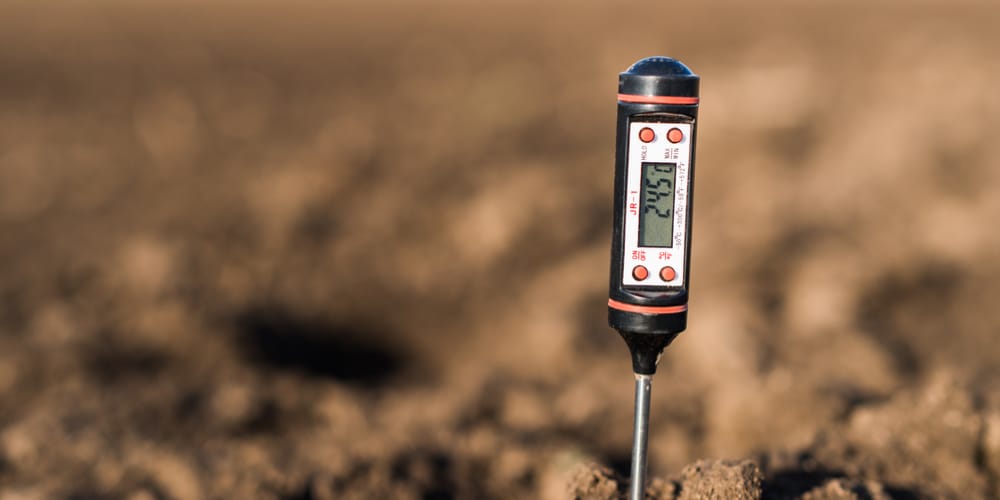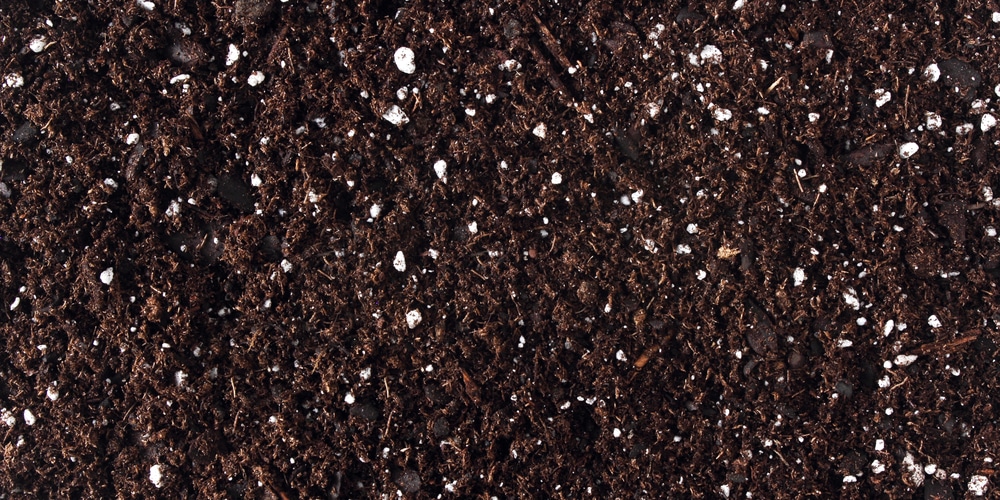There is increasing pressure for gardeners to keep track of pH. After all, this scale can help you understand if your plant is getting enough nutrients effectively. Of course, the optimal conditions will depend on the type of plant and the natural pH of the soil you are using. Depending on its preferences and tolerances, you may have to make slight changes to the pH of your potting soil. But you won’t be able to do it by “observing.” Indeed, the only way to determine a soil pH is to use a pH meter. With that said, there are some ways to make the soil more acidic. However, most methods take time to give effective results.
How to Lower PH in Soil Fast

To learn how to lower pH in soil fast, keep reading our essential guide. Most fruits and vegetables, as well as flowers like marigolds or azaleas, thrive in acidic conditions. Make sure you know what conditions your plants will thrive in and make use of our tips to achieve fast and long-lasting results.
Aluminum Sulfate
One of the quickest ways to lower pH in the soil is to use aluminum sulfate. This compound works almost instantly by producing acidity upon dissolving. By being highly soluble, aluminum sulfate works great in moist potting soils. However, there are some downsides when choosing to use this compound. For starters, it is more expensive than another useful compound that reaches similar results but not as quickly: elemental sulfur. Thus, if you are trying to treat a large area, you may prefer using sulfur instead to save some money. Also, aluminum sulfate can cause damage to your plants if you don’t apply it correctly. You’ll have to be very careful in using the appropriate dosage, which usually depends on the starting pH of your soil. Make sure you measure the pH with a suitable scale.
Plus, you shouldn’t use this compound shouldn’t for larger pots or gardens. Applying high quantities of aluminum sulfate can lead to metal accumulation or aluminum toxicity. Still, if you need to lower the pH of your soil fast, this is one of the best ways to do so.
Vinegar
You probably use vinegar in the kitchen. Also, you may know how to use it for cleaning, too. After all, this liquid has a variety of applications. So you might not be surprised that this kitchen staple can work wonders for gardeners too. Indeed, applying vinegar is one of the faster ways to lower soil pH. This organic solution can help you adjust the pH of your soil without having to purchase commercial products. Plus, depending on what kind of ingredients your vinegar includes (apple, white wine, balsamic, and so on), it might even add some vitamins and minerals essential for your plant’s growth. Since the average pH of commercial vinegar is about 2.4, this highly acidic liquid can quickly lower the pH in your soil. However, you will have to pay attention to the ratios. As a rule of thumb, you should dilute one cup of vinegar in 3 liters of water and spread the solution in the soil. You can also introduce vinegar through an irrigation system.
The biggest drawback of using vinegar is that it won’t be effective in your garden: large areas require solutions that are not so drastic if you want to enjoy long-lasting results. However, if you are trying to make the soil of one of your pots more acidic, vinegar will work wonders.
Sulfur-Coated Urea
Sulfur-coated urea is one of the most popular ingredients you’ll find in commercial fertilizers. When added to the soil on its own, it can act as a quick solution for lowering pH. Contrary to other methods mentioned here, it doesn’t have immediate results. You will have to wait a week or two to notice the first effects. However, this additive can help your plants become healthier by supplying them with additional nutrients. If you fertilize the soil you are trying to make more acidic, ensure you apply a product with urea. Don’t forget to check the mixing instructions to determine the proper amount to use on your pot. Indeed, over-fertilizing soil can have counterproductive results.
Iron Sulfate
While it is not a particularly fast solution, iron sulfate can lower the pH of your soil by a considerable amount. This compound works best for compact soils and doesn’t depend much on temperature conditions. Indeed, contrary to other methods (that are best suitable for the warmer months), iron sulfate is a versatile solution. Also, you can use it in either large or small areas, with visible results. In only a couple of weeks, you’ll be able to lower your soil’s pH.
When applying iron sulfate to your garden, you may have to use more than 10 pounds of the compound per every 100 square feet of soil. If you need to apply more than that, you must split the quantity into two applications spaced at least a month apart. Doing so will give the soil enough time to absorb the compound and change its pH. While iron sulfate may sound like a dreamy solution for your garden, you must pay attention to this compound not sticking to your clothes. Indeed, it can leave rusty stains that are hard to wash. Plus, they may contaminate other garments when using the washing machine. Be careful if you don’t want to have the headache of dealing with rusty patches on your favorite clothes.
How to Lower PH in Soil Fast: The Bottom Line
This guide about how to lower pH in soil fast includes the most efficient tips in making sure your plants will thrive in acidic conditions. Remember to purchase a pH meter to ensure you add the proper quantities of the compounds included here. Of course, if you are not in a rush, you can use other methods to lower pH. Keep in mind that the more “organic” solutions like vinegar or coffee might be effective for small pots but not realistic for large areas. Plus, if you decide to use compounds such as iron sulfate or aluminum sulfate, pay attention to the suggested quantity. Avoid falling into the trap of overdoing it, as it may do more harm than good.
